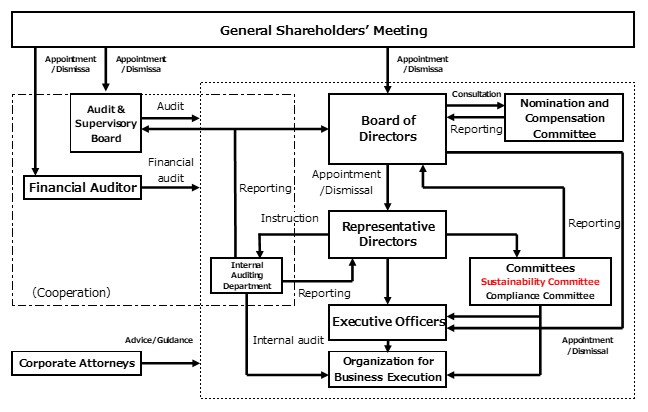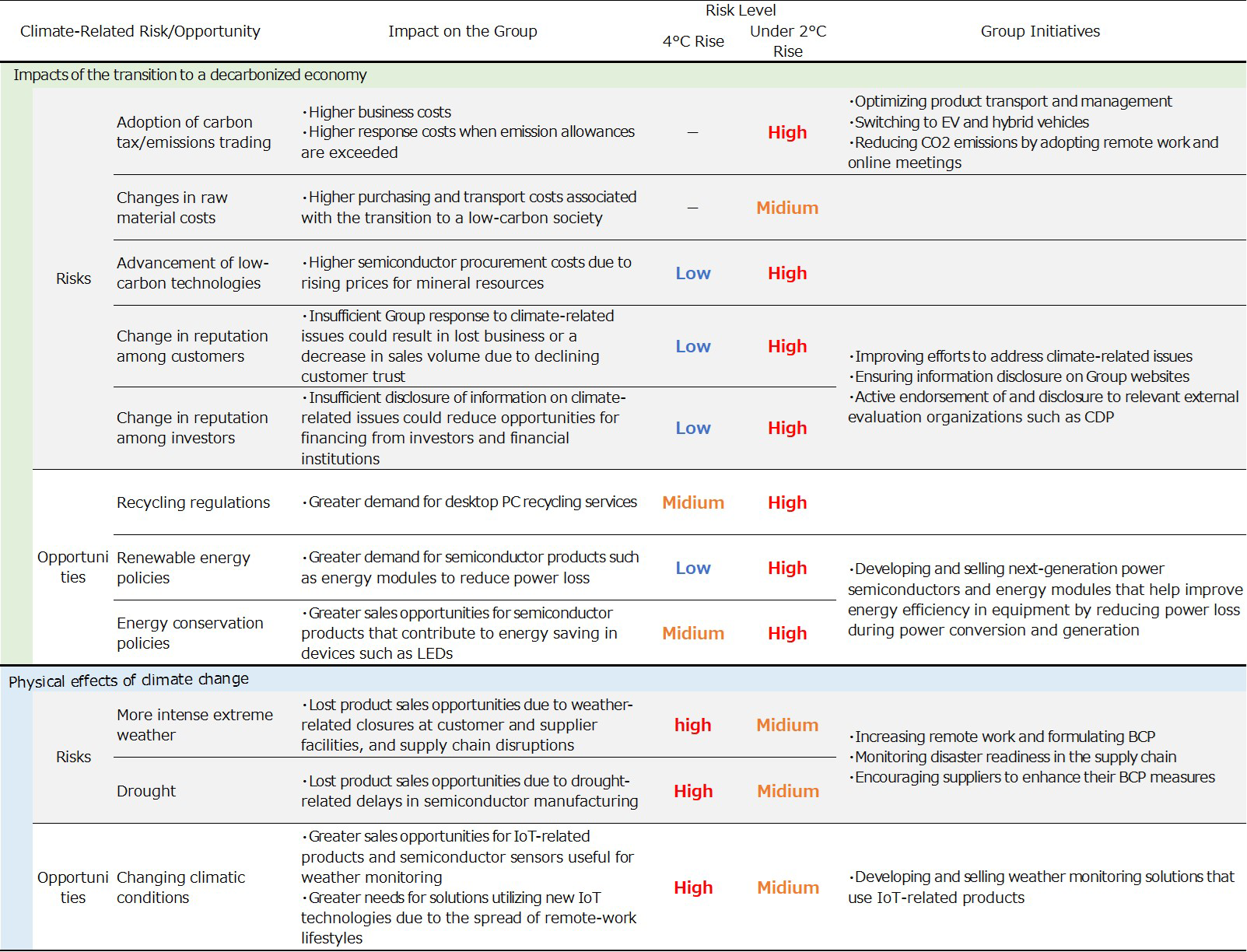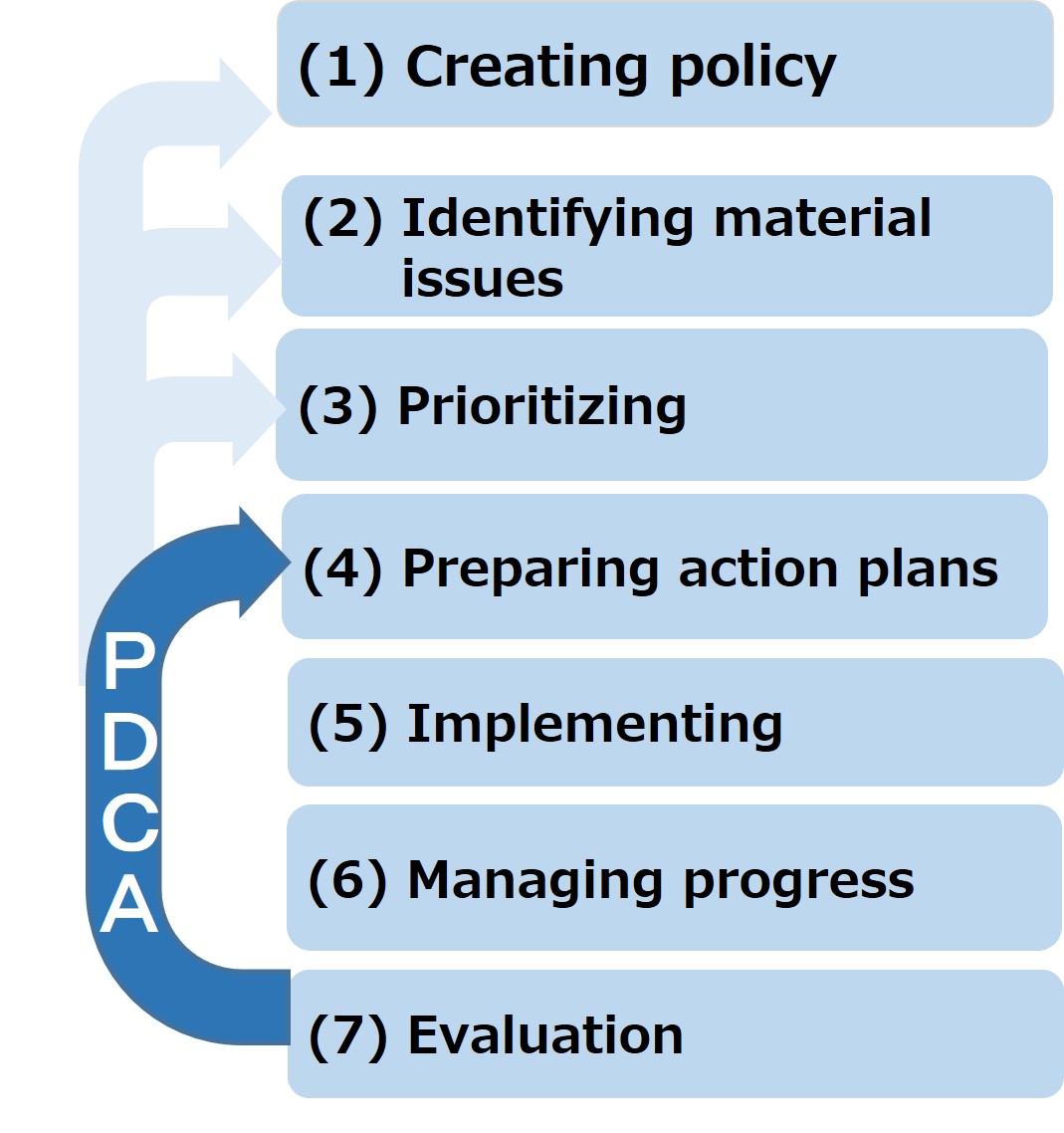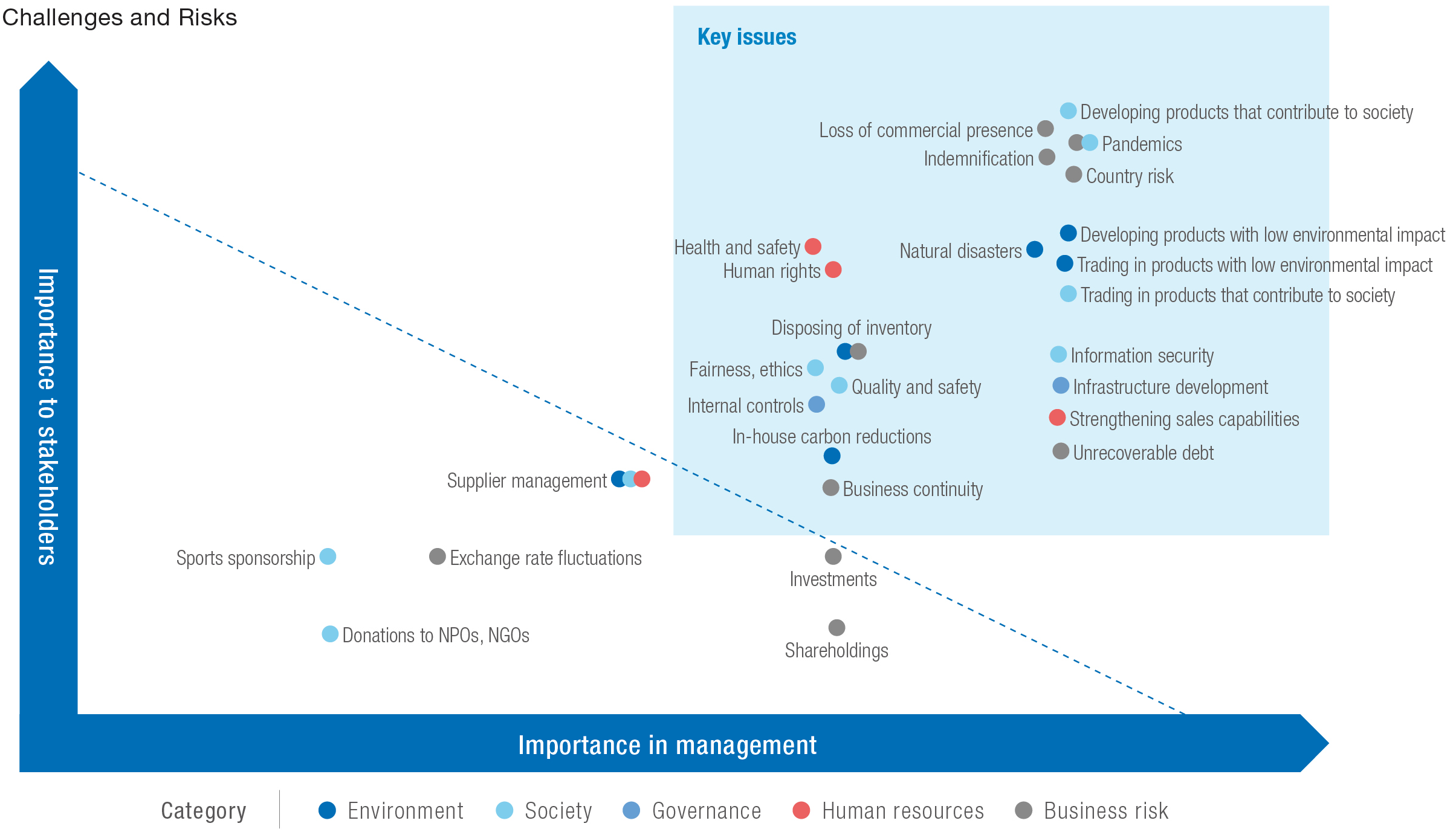- HOME
- Sustainability Initiatives
- Taking Action on the TCFD Recommendations
Taking Action on the TCFD Recommendations
Based on the recommendations of the Task Force on Climate-Related Financial Disclosures (TCFD), the Ryoyo Group discloses relevant information in four areas: governance, strategy, risk management, and metrics and targets.
1. Governance
The Ryoyo Group recognizes that addressing sustainability issues, including climate change, is an important material issue. Taking action on this will not only reduce business risks but also lead to new business opportunities.
The Ryoyo Group’s Sustainability Committee addresses sustainability issues to help build a decarbonized world. It convenes twice a year, formulates basic policies and strategies for the Group’s initiatives, promotes specific action plans, monitors progress, and regularly reports to the Board of Directors.
The Board of Directors deliberates and decides on policies and strategies related to sustainability, including climate change initiatives, and supervises the progress of specific action plans.
Corporate Governance Structure

2. Strategy
The Ryoyo Group conducts scenario analysis to gauge the risks and opportunities that climate change poses to its business. Based on the results, we explore measures to enhance the resilience of our business activities.
For this analysis, we use two specific scenarios prepared by the Intergovernmental Panel on Climate Change (IPCC) and the International Energy Agency (IEA), namely, a 4°C rise and an under 2°C rise. The first scenario is what climate models predict the world could look like by 2100 if global temperatures were to rise by an average of 4°C compared to pre-industrial levels. The second is what could happen in the same period if the average global temperature rise is limited to between 1.5°C to 2°C by efforts to promote carbon neutrality.
Based on these two climate change scenarios, we have qualitatively analyzed the potential impacts on our business by 2030.
■Scenario Explanation and Assessment of Risks and Opportunities for Our Business
4°C Rise:Physical impacts of climate change, such as more intense extreme weather events, can be expected under this scenario. The potential risks for the Group include lost profit opportunities due to weather-related logistics disruption or damage to the production facilities of the Group or suppliers. To minimize these risks, the Group will need to enhance its disaster mitigation measures and disaster prevention equipment, while strengthening business continuity plan (BCP) measures, and updating procurement strategies.
As for opportunities based on this scenario analysis, we expect stronger sales of sensors and IoT-related products, which are needed to monitor changes in weather phenomena. We also anticipate increased demand for IoT solutions to support remote-work lifestyles to adapt to climate changes such as higher average temperatures.
Under 2°C Rise:Under this scenario, impacts due to the transition to a decarbonized economy are expected, such as the adoption of carbon taxes and the development of policies and technologies related to renewable energy and energy conservation.
The risks in this scenario include potentially higher procurement and operating costs due to new carbon taxes and emissions trading rules. Moreover, active investment in the development of low-carbon and decarbonization technology could increase the price of mineral resources, which in turn could increase the cost of procuring the semiconductors that we supply. Finally, inadequate efforts by the Group to address climate-related issues and to disclose relevant information could lead to a loss of confidence among customers and investors, thereby reducing the Group’s business and financing opportunities.
Along with the transition to a decarbonized economy under this scenario, opportunities will also arise. Sales opportunities for certain semiconductor products are expected to increase, especially for those needed to advance renewable energy and energy-saving technologies. Demand for recycling services will also likely increase.
■Risk Mitigation at the Ryoyo Group
Based on these scenario analysis results, the Ryoyo Group is taking steps to enhance the resilience of its business activities.
The Group develops and sells next-generation power semiconductors and energy modules that can reduce power loss in equipment during power conversion and generation. These products are used in photovoltaic and other systems, and they can improve power generation efficiency. Accordingly, they can help meet the needs of society as it transitions to a decarbonized economy.
We are also looking into building a business patterned on the circular economy that handles everything from the sale of ICT products to the recovery of used devices. We are also considering the development of weather monitoring solutions using IoT-related products to meet the anticipated need to cope with more intense extreme weather events.
Ryoyo Group Initiatives Based on Climate-Related Risks and Opportunities
* Click this link for more details >
3. Risk Management
At the Ryoyo Group, risk management of environmental issues such as climate change is an important activity to improve corporate value. We identify and evaluate such risks, assess their degree of impact and significance, and formulate response measures from a medium- to long-term perspective. Major risks are also regularly reported to the Board of Directors.
After monitoring and re-evaluating risks and identifying the major risks, the Group works to mitigate them using its sustainability strategy.
- Sustainability Initiatives
with Integrated Risk Management

- Identifying Material Issues by Specifying and
Evaluating Risks and Opportunities

- Sustainability Initiatives
with Integrated Risk Management

- Identifying Material Issues by Specifying and
Evaluating Risks and Opportunities

4. Metrics and Targets
As a basic policy for reducing greenhouse gas emissions at its sites in Japan, the Ryoyo Group is aiming for a 46% reduction of its total Scope 1 and 2 emissions by fiscal 2030, compared to fiscal 2019, while also seeking to achieve carbon neutrality by fiscal 2050.
Going forward, we also plan to determine our Scope 3 emissions, as we work to reduce greenhouse gas emissions throughout the supply chain.
| Changes in Scope 1 and 2 GHG Emissions | ||||||
| Scope1 | Scope2 | Scope1+2 | Scope1+2 YoY |
Scope1+2 Base year comparison |
Situation/Measures | |
| FY2019 (Base Year) |
63.6t | 175.4t | 239.0t | ― | ― | Set 2019 as the base year for calculating target achievement. Promoted workplace power-saving techniques such as switching off electric equipment. |
| FY2020 | 37.4t | 169.0t | 206.3t | ▲14.1% | ▲14.1% | Reduced energy consumption due to pandemic-related activity restrictions. Reduced fleet by 2 vehicles. Partially converted Head Office lighting to LED. |
| FY2021 | 36.5t | 154.2t | 190.7t | ▲7.1% | ▲20.2% | Kept energy consumption low with activity restrictions. Reduced fleet by 1 vehicle. Completed the switch to LED lighting at the Head Office. |
| FY2022 | 38.0t | 140.4t | 178.4t | ▲6.4% | ▲25.3% | Saw energy consumption rise as restrictions on activity were relaxed. Reduced fleet by 1 vehicle. Switched to renewable energy at two work locations in Japan. |
*Scope 1 emissions: Calculated based on the amount of gasoline used by company vehicles in Japan, including at subsidiaries in Japan
*Scope 2 emissions: Calculated based on electricity consumption at offices in Japan, not including subsidiaries
CONTACT
For inquiries and requests,
please fill in and send the form below.